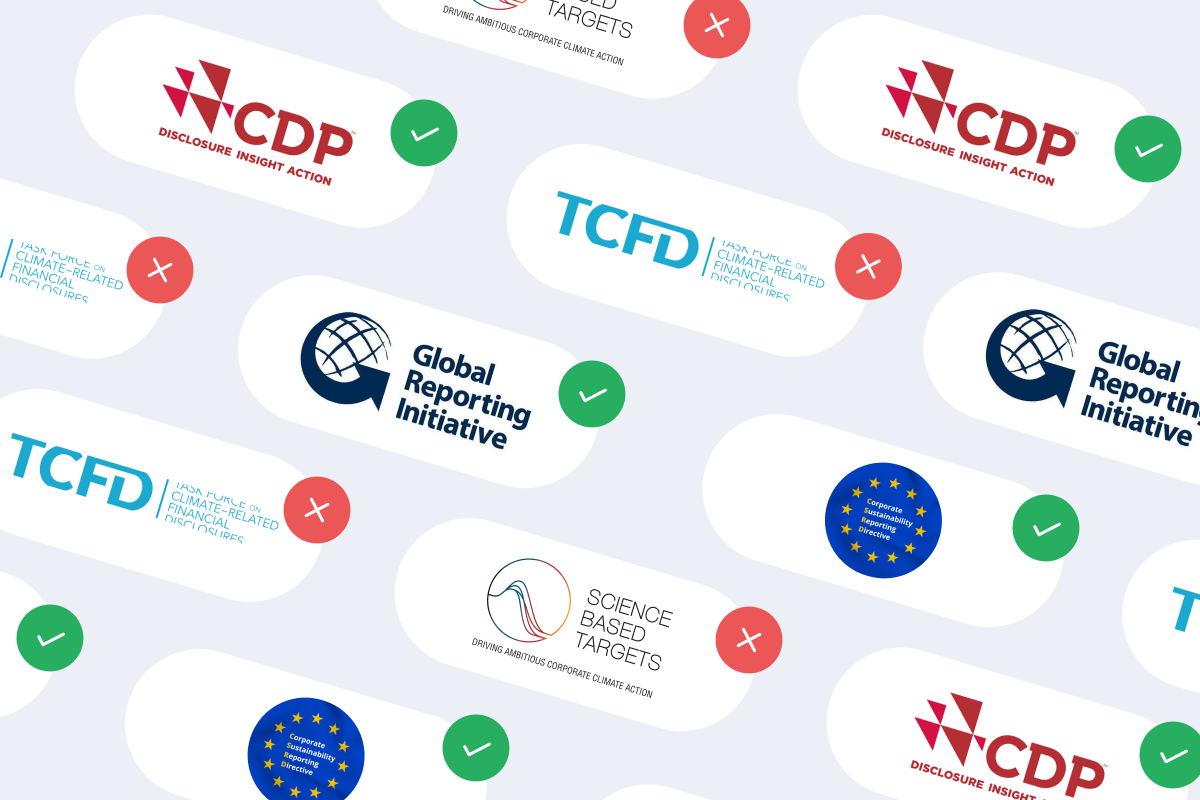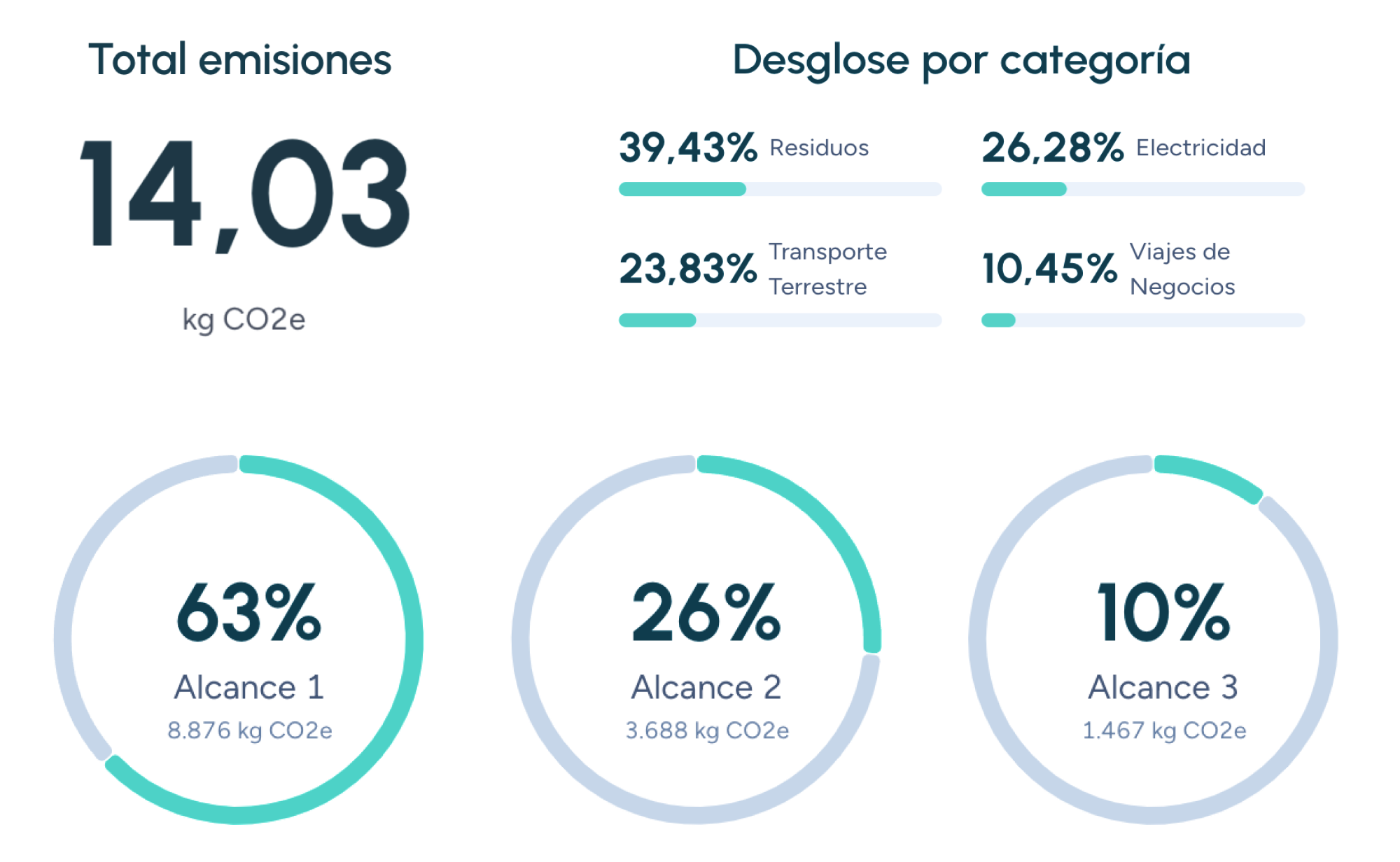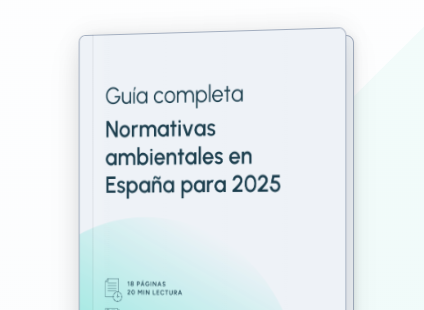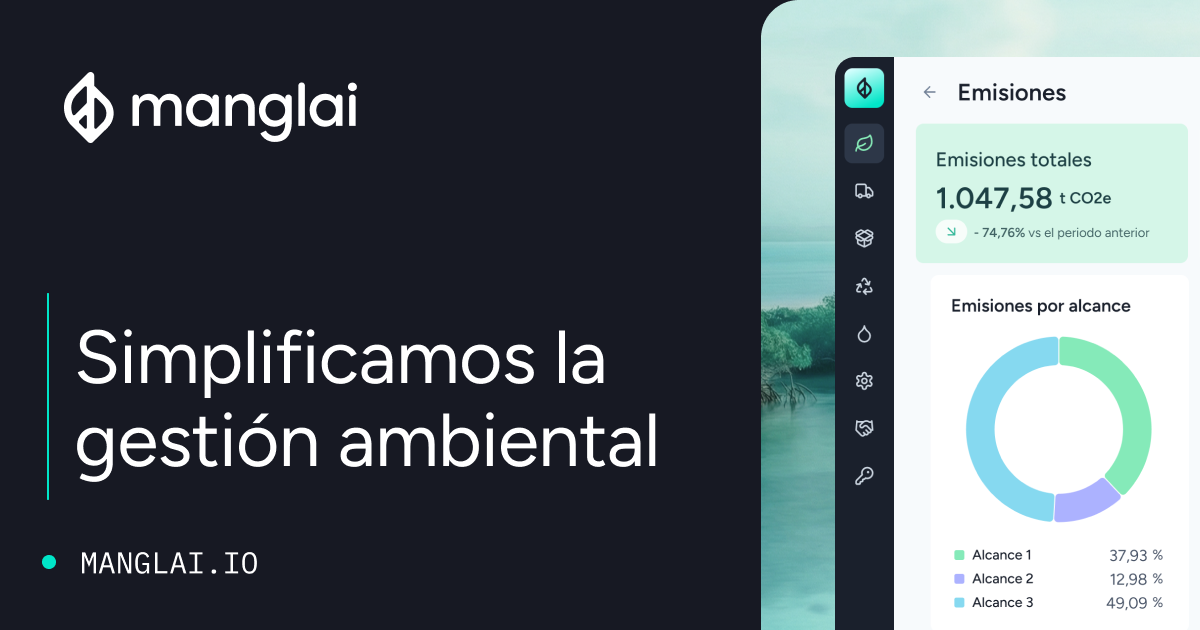Back to the blog
Practical guides
7 Best Software Solutions for Water Footprint Management (ISO 14046)
Andrés Cester
CEO & Co-Founder
Measuring the water footprint has become a key step for any organization seeking to manage water use responsibly and comply with international sustainability standards.
In a context of growing water scarcity and increasing regulatory pressure, companies need tools that can quantify, analyze, and reduce their impacts based on verifiable data.
Standards such as ISO 14046, Life Cycle Assessment (LCA), and European ESG (Environmental, Social, and Governance) reporting frameworks require a level of precision that can only be achieved through specialized software solutions.
In this article, we compare the main tools available on the market and explain which criteria to follow to choose the best software to evaluate your company’s or products’ water footprint.
What is the Water Footprint and why is it important to measure it?
The water footprint quantifies the total volume of water used — both directly and indirectly — by an organization, process, or product throughout its life cycle. It is not only about measuring water consumption in liters, but also about considering water quality, local availability, and associated environmental impacts.
The ISO 14046 standard establishes the methodology for this calculation, integrating the Life Cycle Assessment (LCA) approach defined in ISO 14040 and 14044. This connection allows the water footprint to be understood as an environmental indicator within the complete life cycle of a product — from raw material extraction to end of life.
In practical terms, measuring the water footprint enables companies to:
- Identify critical points of water consumption or pollution.
- Design strategies for water efficiency and circularity.
- Respond to ESG reporting requirements or environmental certifications.
- Enhance corporate reputation among clients and investors.
If you want to learn more about how LCA is used to assess broader environmental impacts, we recommend reading our article on Life Cycle Assessment (LCA): How to evaluate a product’s environmental impact.
What criteria should you follow to choose the best Water Footprint software?
Choosing a water footprint software solution is not just a technical decision — it is a strategic one. The selected tool must ensure methodological consistency, data traceability, and ease of implementation.
Here are the six essential criteria to consider:
- Alignment with ISO 14046: The software must follow the core principles of the standard: assessing water use, consumption, and quality throughout a product or service’s life cycle.
- Integration with LCA and other environmental metrics: The water footprint is part of a product’s broader environmental impact. The best tools allow integration with other indicators such as carbon footprint, eutrophication potential, or energy consumption.
- Database quality and coverage: Reliable datasets are essential for accurate results. The software should include regionalized impact factors that reflect local water scarcity.
- Usability and accessibility: An intuitive interface, guided workflows, and clear visualizations are crucial for non-technical teams.
- Scalability and collaboration: The platform should allow multiple departments or subsidiaries to work simultaneously on shared projects.
- Total cost of ownership: Evaluate license fees, maintenance, technical support, and implementation time.
Which is the best software to assess Water Footprint?
Water is becoming an increasingly scarce resource, and managing it responsibly has turned into a business priority. Choosing the right software to evaluate your water footprint can make the difference between a superficial calculation and a truly valuable environmental report.
Below, we analyze the most relevant tools on the market and explain why Manglai stands out as the most comprehensive alternative, integrating water, climate, and life-cycle measurement into a single digital environment.
1. Manglai: Rigorous, agile, and ISO 14046-compliant Water Footprint measurement
Manglai leads the national market by offering a comprehensive solution for evaluating the water footprint according to major international standards.
It combines methodological rigor with digital efficiency, automating data collection, factor application, and report generation to deliver precise, verifiable results ready for ESG disclosure.
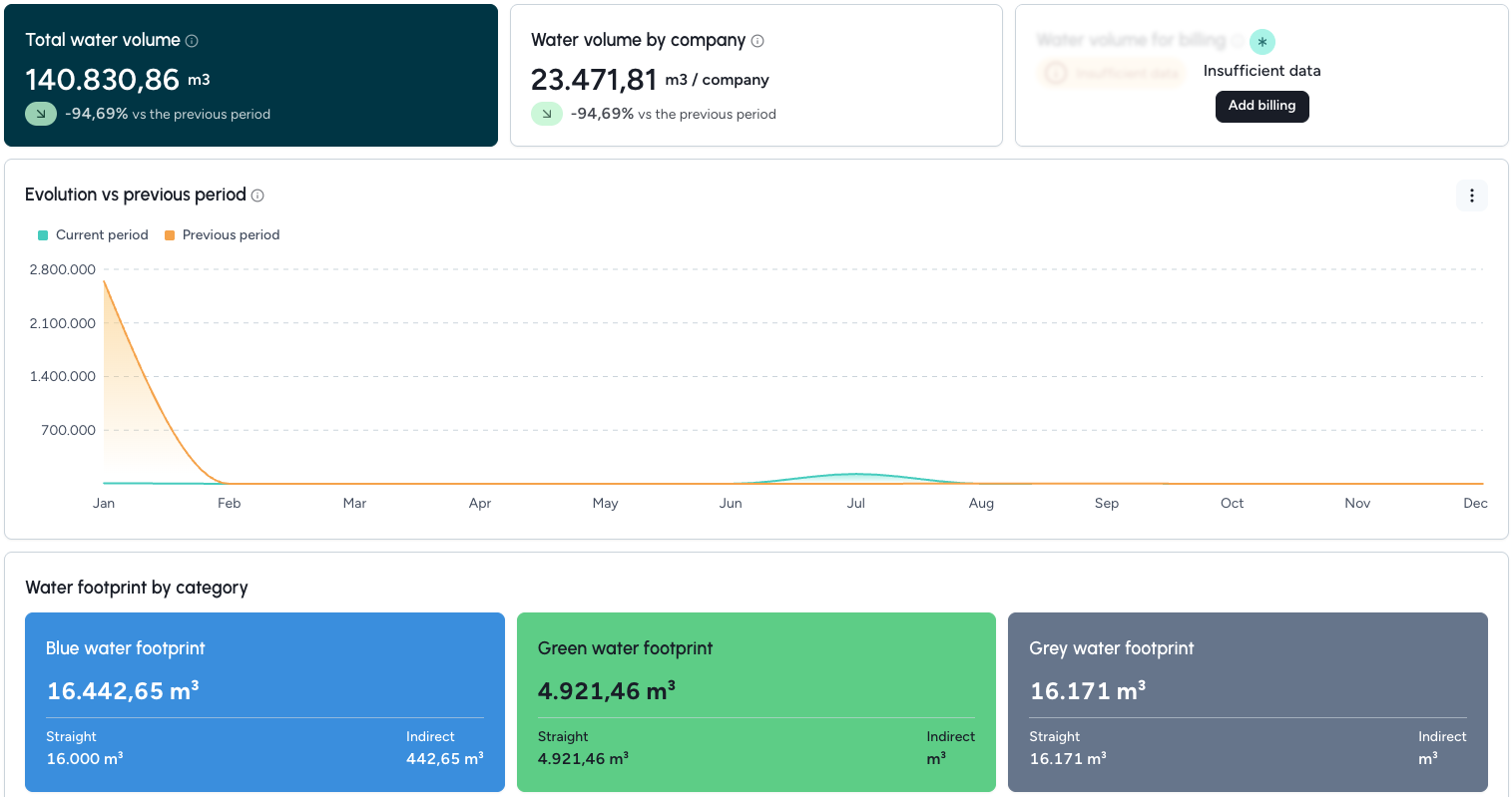
Among its main advantages are:
- Methodology aligned with ISO 14046 and LCA: quantifies blue, green, and grey water consumption throughout the product or process life cycle.
- Verified databases: integrates recognized libraries such as Ecoinvent and regional water scarcity factors.
- Results visualization: dashboards display consumption, impacts, and reduction opportunities.
- Integration with other environmental indicators: allows combining the water footprint with the carbon footprint and other sustainability KPIs.
- Auditable reports: generates ready-to-verify reports for ESG disclosure, fully compatible with CSRD and the EU Taxonomy.

Moreover, its practical approach minimizes the risk of greenwashing by ensuring full transparency and traceability.
You can learn more about how to communicate your results in our article: How to communicate your decarbonization strategy to avoid greenwashing.
2. SimaPro: Scientific benchmark in Life Cycle Assessment
Developed by PRé Sustainability, SimaPro is one of the most recognized tools in the field of Life Cycle Assessment (LCA). It enables water footprint calculation through specific modules based on ISO 14046 and methodologies such as AWARE or Water Stress Index.
It is an excellent choice for environmental consultancies, universities, or companies with technical teams, although it has a steep learning curve.
Advantages:
- Broad compatibility with multiple databases.
- Strong analytical depth and methodological transparency.
Considerations:
- Less intuitive interface.
- High licensing and training costs.
3. Quantis Suite 2.0: Corporate and visual approach
Quantis Suite 2.0 provides an optimized experience for multinational companies looking to integrate environmental metrics into their global sustainability strategy.
It includes modules for water, carbon, and biodiversity footprints, offering visually rich results designed for corporate ESG reporting.
Advantages:
- Multi-criteria analysis within a single interface.
- Ideal for ESG reporting and stakeholder communication.
Considerations:
- Lower level of customization for highly technical sectors.
- License available on demand with a high cost.
4. One Click LCA: Simplicity tailored to the construction sector
Renowned for its focus on construction and manufacturing, One Click LCA allows users to assess the water footprint of materials and processes in line with European standards such as PEF and EN 15804.
Advantages:
- Sector-specific templates for Environmental Product Declarations (EPDs).
- Direct integration with BIM software.
Considerations:
- Limited focus on specific industries.
5. Water Footprint Network Tool: Educational and global methodology
The Water Footprint Network (WFN) pioneered the water footprint concept. Its online tool allows calculation of blue, green, and grey water components for products and organizations.
Advantages:
- Internationally recognized standard methodology.
- Accessible for universities and small businesses.
Considerations:
- Not designed for corporate reporting or system integration.
6. GaBi Water and Life Cycle Suite: Technical and detailed analysis
Developed by Sphera, GaBi offers specific modules for water impact and LCA analysis. It is widely used by large industries and consultancies requiring scientific precision and parameter control.
Advantages:
- Extensive data coverage.
- Integration with multiple impact assessment methodologies.
Considerations:
- Technical software requiring specialized training.
7. openLCA: Open-source option for technical profiles
openLCA is a free, open-source alternative for performing Life Cycle Assessments, including water footprint evaluation. It’s ideal for researchers or companies with limited budgets and in-house technical expertise.
Advantages:
- Open and fully customizable code.
- Compatible with international LCA databases.
Considerations:
- Manual setup required and steep learning curve.
How to start measuring the Water Footprint in your company?
Starting a water footprint measurement process doesn’t have to be complex if you follow a clear, step-by-step methodology.
In a context where water management has become a key sustainability indicator, companies need tools that allow them to quantify their impact accurately and take effective action.
- Define the purpose of the calculation: determine whether the goal is ISO 14046 compliance, operational management improvement, or sustainability reporting.
- Set the scope: decide whether you will measure direct water use (internal) or also indirect use (supply chain).
- Gather relevant data: include volumes of water intake, consumption, discharge, treatment, and quality.
- Apply regional impact factors: water impacts vary by location. Use updated databases or tools like Manglai, which already integrates them.
- Calculate and analyze results: identify the processes with the highest water impacts and define reduction measures.
- Communicate results transparently: present data using clear, verifiable indicators.
If you want to go beyond basic measurement, explore how these results can be integrated into Life Cycle Assessment (LCA) strategies or CSRD-aligned sustainability reports.
Technology and responsible water management: The future of sustainability
Water has become the new strategic axis of corporate sustainability. Companies that quantify and reduce their water impact not only comply with regulations but also improve operational efficiency, brand reputation, and access to green financing.
Choosing the right software makes the difference between a generic calculation and a robust, verifiable water management strategy.
Manglai stands out as the most comprehensive solution for companies seeking to combine methodological rigor, data traceability, and real impact, integrating water footprint management within a global life cycle perspective.
If you want to measure your water use accurately and communicate your progress with credibility, request a demo of Manglai and discover how to evaluate your water footprint in compliance with ISO 14046.
FAQs about How to choose the best Water Footprint software according to ISO 14046
What is the difference between water footprint and water consumption?
Water consumption measures absolute volumes, while the water footprint evaluates the environmental impacts associated with water use and pollution across the life cycle.
Is it mandatory to measure the water footprint under ISO 14046?
No, it’s not mandatory, but it is increasingly required in certifications, tenders, and ESG reporting.
Can I calculate the water footprint without having complete data?
Yes. Most software tools allow preliminary estimates based on averages or regional factors, which can later be refined with real data.
Which sectors should prioritize water footprint measurement?
The food, textile, chemical, construction, and energy industries are the most water-intensive and therefore benefit most from structured assessment.
How long does it take to implement a water footprint measurement tool?
It depends on company size and data availability. With Manglai, preliminary results can be obtained in just a few weeks.
Andrés Cester
CEO & Co-Founder
About the author
Andrés Cester is the CEO of Manglai, a company he co-founded in 2023. Before embarking on this project, he was co-founder and co-CEO of Colvin, where he gained experience in leadership roles by combining his entrepreneurial vision with the management of multidisciplinary teams. He leads Manglai’s strategic direction by developing artificial intelligence-based solutions to help companies optimize their processes and reduce their environmental impact.
Content
Companies that trust us

Manglai vs Dcycle: Comprehensive comparison of sustainability software in Spain
We compare Manglai vs Dcycle so you don't have to do it!
17 December, 2025
7 Best Sustainability Management Software Tools Compliant with the CSRD
We analyse the best software solutions to comply with the CSRD: traceability, ESG reporting and automation with Manglai leading the ranking.
10 December, 2025
8 Best Software Tools for Calculating Emissions Under the GLEC Framework
We compare the best tools to measure product and transport emissions under the GLEC Framework, with Manglai leading the ranking.
01 December, 2025
Guiding businesses towards net-zero emissions through AI-driven solutions.
© 2025 Manglai. All rights reserved
Política de Privacidad